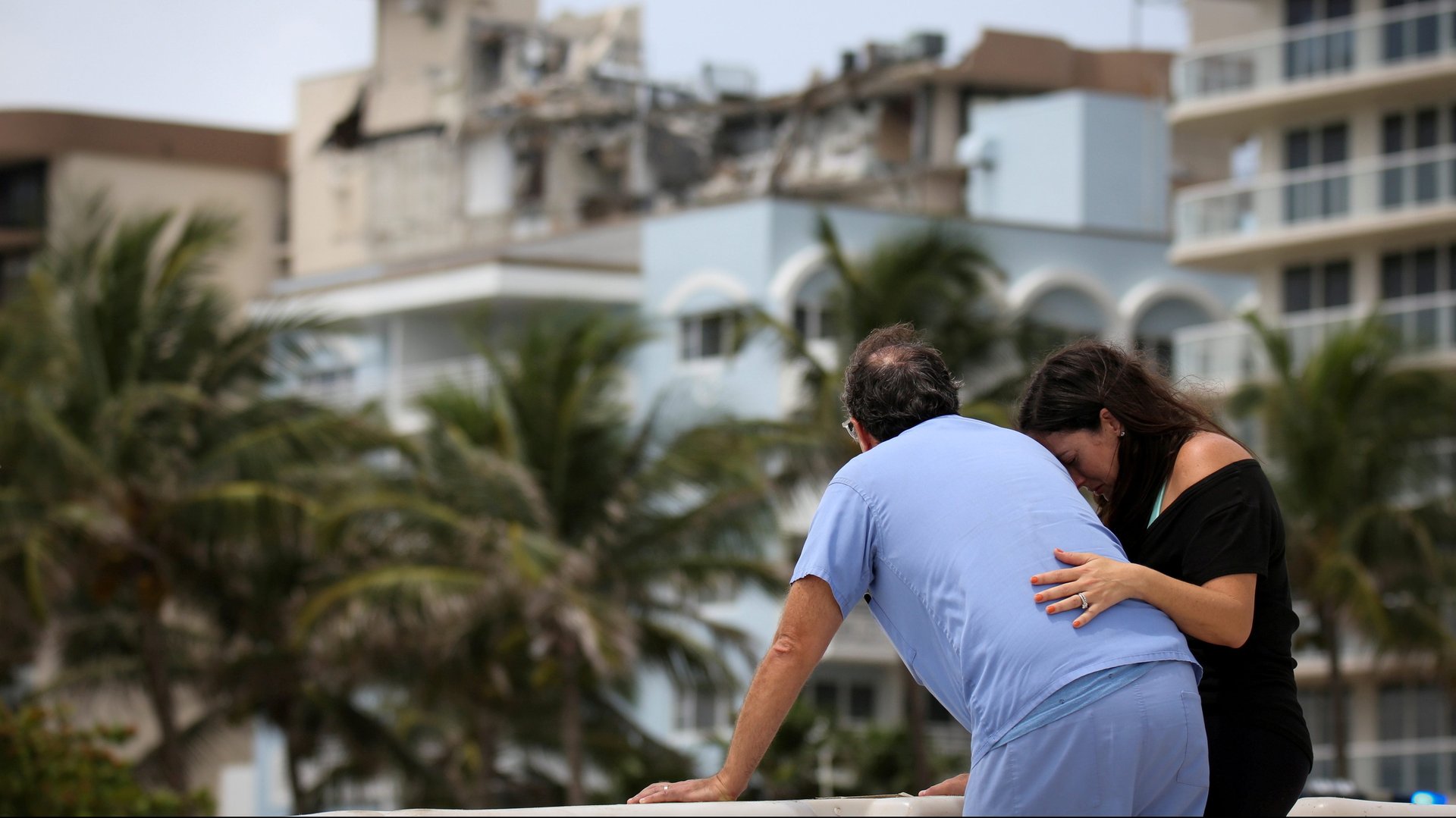The Surfside building collapse and what we know about the climate risks Miami faces
Experts are still investigating the causes of the of the Champlain Tower South condo collapse in Surfside, Florida last Thursday, a tragedy that has left at least 11 dead and more than 150 people unaccounted for. Initial information about the building has included reports of structural issues, as well as environmental challenges posed by the area’s geography.


Experts are still investigating the causes of the of the Champlain Tower South condo collapse in Surfside, Florida last Thursday, a tragedy that has left at least 11 dead and more than 150 people unaccounted for. Initial information about the building has included reports of structural issues, as well as environmental challenges posed by the area’s geography.
A 2018 report from an engineering firm identified a “major error” in the building’s structure that caused water damage to concrete slabs near the base. A 2020 report by a Florida International University professor found that the land where Champlain Tower South building sat had been sinking for decades.
The Miami area is especially vulnerable to climate change
In addition to worsening climate events like flooding, and hurricanes, Miami faces threats to its very foundations. The bedrock under southern Florida is limestone, a porous rock that water can seep through. As sea levels rise, salt water can push fresh groundwater up through the limestone to create a brackish mix that threatens the area’s water supply as well as the foundations of buildings. Some experts are debating if the corrosive effects of this water could have contributed to the Champlain Tower collapse.
“Salt water is very bad for concrete in the foundations of buildings,” says professor Zhong-Ren Peng, who directs research on sea level rise at the University of Florida. “The salt water can cause corrosion and cracks in the concrete, and if you don’t take care of it, over time these cracks can get bigger.”
Sea level rise also impacts subsidence, the way land sinks. The 2020 study led by Florida International University professor Shimon Wdowinski found that parts of Miami Beach including the collapsed building sank at a rate of 1 mm to 3 mm per year over several years in the 1990s. Some amount of subsidence is to be expected, but if the land sinks unevenly, it can damage the structures sitting on top.
The future of building along the Florida coast
The building collapse adds increased urgency to existing questions about the future of land use along the Florida coastline. Sea level rise will continue to pose a threat to existing and future developments. Building codes and zoning laws must take it into account, says Peng. Last year, the Florida state legislature passed a law requiring that new construction along the coast that uses public funds must conduct a study to see how sea level rise will impact the project. Just this past May, Governor Ron DeSantis signed a bill to coordinate responses to flooding and sea level rise throughout the state. It establishes a grant program to fund local projects for resilience planning.
The question harder than how to make waterfront developments more resilient is whether they should be built at all. Some urban planners suggest coastal construction should stop entirely, but it’s not a popular opinion in South Florida’s lucrative real estate market.
“It’s a difficult conversation, but it’s a conversation we need to have,” says Peng. “This is not only about this one building; These issues are immediate and we cannot just ignore them.”
Update (June 29): This item has been updated with the latest death figures.